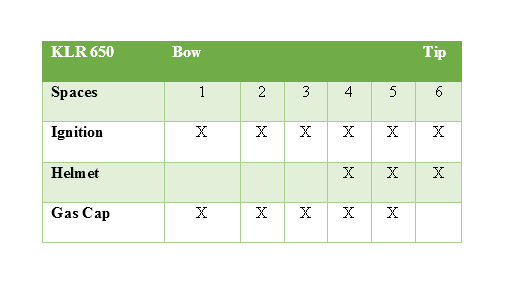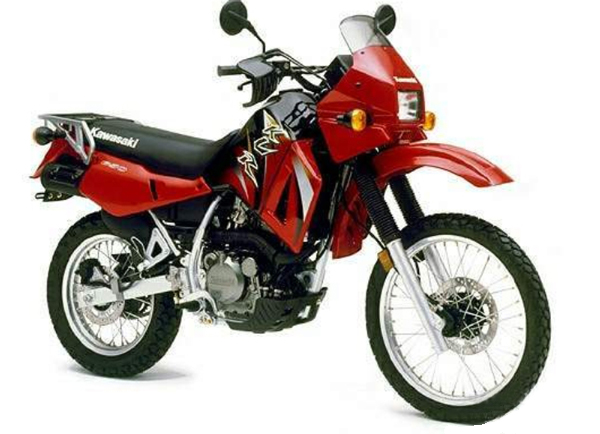Can you make a working key for your motorcycle by disassembling any one lock to get the correct bitting for the key? The answer is probably not for most people. The reason for this is most locks on a motorcycle don't use every cut on the key to operate. For example, if you disassembled the helmet lock on a first generation Kawasaki KLR650 it will only give you the bitting for positions 4 through 6. You need the bitting for all positions, 1 through 6, for the key to operate the ignition lock and position 1 through 5 for the gas cap lock. See photo below. Most motorcycle ignition locks will need all bittings or cuts on a key to operate. Taking apart the ignition lock will tell you all the cuts you need for the key, but the draw back is the ignition lock is usually the most difficult lock to take apart and the most difficult lock to remove from the motorcycle
There are work-around's that motorcycle locksmiths use to figure out all cuts for a key using one of the easier locks to remove and take apart. Some work-around methods require information only available to locksmiths, and other methods require skills that take time to master.
However, there are some older motorcycles with locks that use all cuts on a key to operate. For example, a 1990 Honda Gold Wing key has 5 cuts and all cuts are needed to operate the ignition, gas cap, seat and helmet lock. Any lock on a 1990 Gold Wing can be removed, taken apart and used to make a key that operates all locks on the motorcycle.

The image above shows the bitting for each lock on a first generation Kawasaki KLR 650. The key has 6 cuts and the motorcycle has a total of 3 locks. The 'X' in the chart means the lock requires the proper cut in the key at that position to operate. Bow is another word for the head of a key, or the part you grab to use the key. Tip is the other end of the key, or the part first inserted into the lock.

The above photo is a first generation Kawasaki KLR 650.